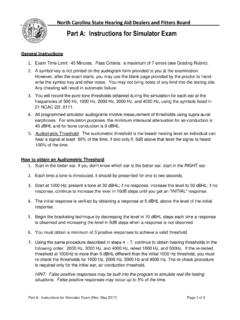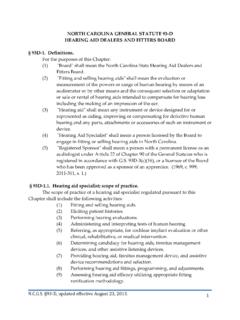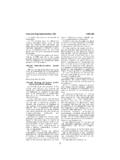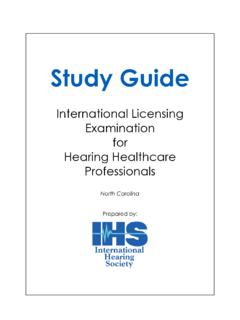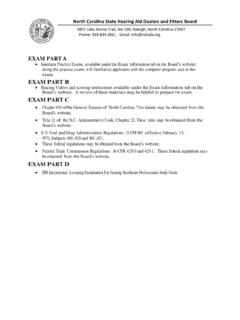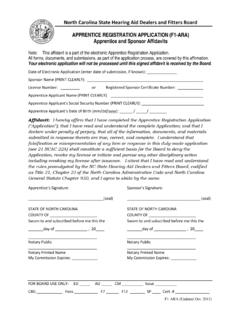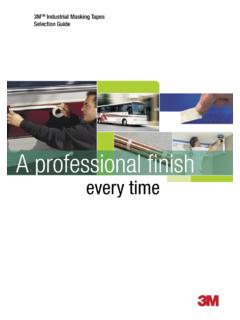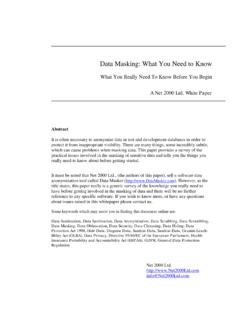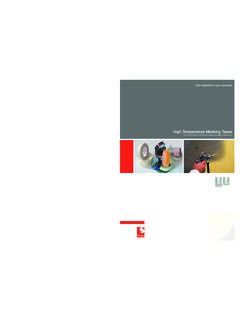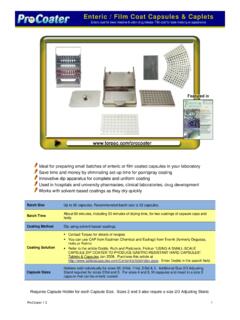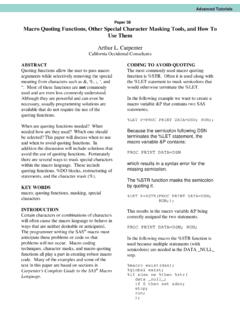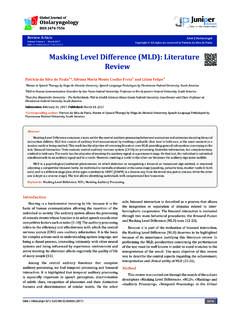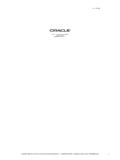Transcription of N.C. Hearing Aid Dealers and Fitters Board Approved Rules ...
1 Hearing Aid Dealers and Fitters Board Approved Rules for masking and Threshold Techniques for the Simulator Portion of the Licensing Exam Audiometric Threshold The weakest level a patient can hear any given signal at least 50% of the time if and only if 5dB above that level a patient hears the signal 100% of the time. How to obtain Threshold 1. Start in the better ear. 2. If you don't know which ear is the better ear, start in the RIGHT ear. 3. start at 1K Hz, present tone at 30dB HL, if no response, go to 50dB HL, if no response, up in 10dB steps until you get an "INITIAL" response.
2 4. When you do get the "INITIAL response, go 5dB above it to verify the "INITIAL" response. 5. Then begin your bracketing technique by going down in 10dB steps every time a signal is heard and up in 5dB steps when it is not heard. 6. You must obtain a minimum of 3 positive responses to achieve a valid threshold result. 7. You will start at 1000Hz, go up in frequency to 4000Hz, come back and retest 1000Hz, then go down to 500Hz. If the re-tested threshold at 1000Hz is more than 5dB different, you must obtain a new threshold. If you have to obtain a new threshold at 1000Hz, you must now re-check all other obtained thresholds, , 1K-4K.
3 This re-check procedure is required only for the initial ear, air conduction threshold. Rules for masking Limits of the Audiogram Simulator: 110 dB Air Conduction testing; 65 dB Bone Conduction Testing Air Conduction First: when there is a 40dB or more difference between the Air Conduction threshold of the test ear and the Air Conduction threshold of the non test ear. Bone Conduction Second: when there is a 15dB or more difference between the Air Conduction threshold of the test ear and the Bone Conduction threshold of the same ear. Air Conduction Third: when there is a 40dB or more difference between the Air Conduction threshold of the test ear and the Bone conduction threshold of the non test ear.
4 How to Mask For Air and Bone Conduction Testing 1. Select the initial amount of masking for the non test ear - threshold of the non-test ear by air conduction plus 10dB HL. 2. Re-establish threshold in the test ear with this initial amount of masking in the non-test ear. 3. Each time there is a response to the puretone signal presented to the test ear, increase the masking presented to the non-test ear by 5dB. 4. Each time the person does not respond to the tone presented to the test ear, increase the signal in 5dB HL steps until another response is observed. 5. Continue the procedure until the masking can be increased three (3) consecutive 5dB steps without producing a shift in the threshold level of the test ear.
5 When this is accomplished, a "plateau" in threshold response has been reached. 6. At this point record the masked symbol on the audiogram. References: Donaldson, (1999). masking - Practical Applications of masking Principles and Procedures. Michigan: International Institute for Hearing Instrument Studies. Donaldson, LL. pp. 187-235 masking : Purpose, Principles and Procedures in R. Sandlin ed. Hearing Instrument Science and Fitting Practices, National Institute for Hearing Instrument Studies, Livonia, Michigan, 1996. Martin, , & Clark, (2003). Introduction to Audiology.
6 Boston: Allyn and Bacon. Approved 4/2014.
